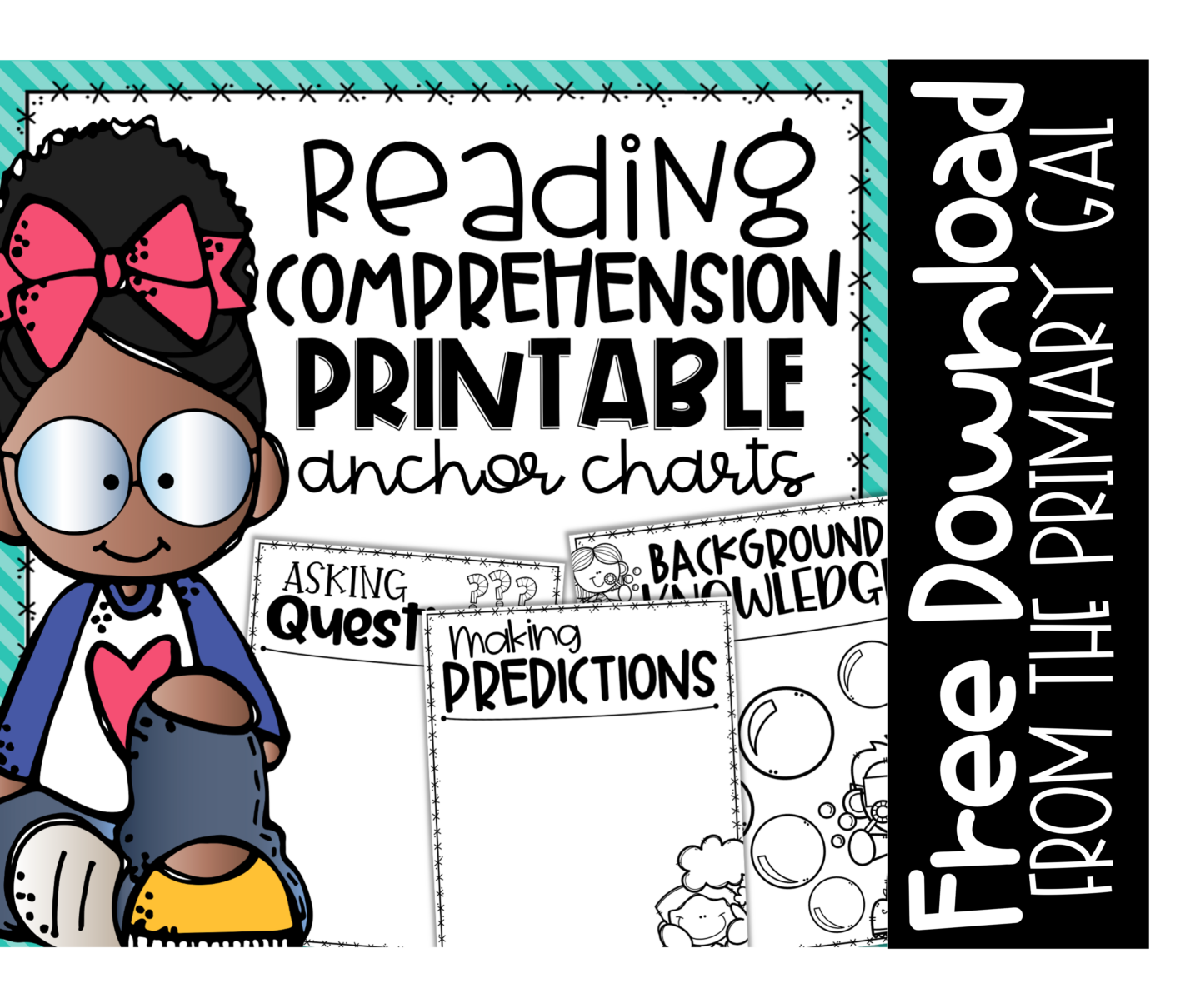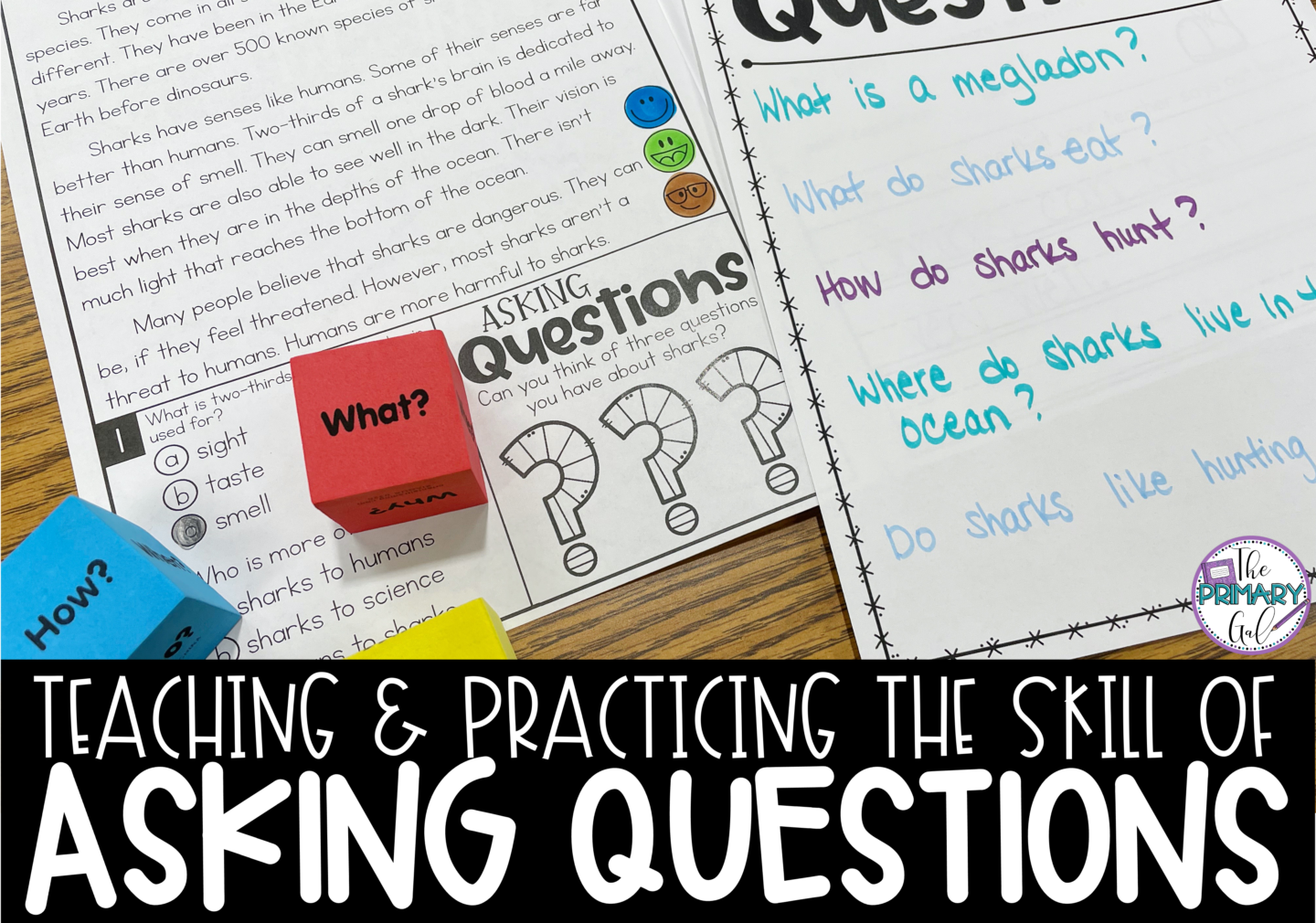
When reading non-fiction text, it is important to train your students to ask questions. It gets their brains thinking, actives background knowledge, and gives them a purpose for reading.
But honestly, it isn’t a skill that comes naturally for so many of our students, especially those with reading disabilities. Reading requires our students to multitask. And unfortunately, our students don’t sit down to read a passage with the realization that they might learn new information.
When we begin a new book about a new topic, I like to discuss the questions that we might have and the answers we’ll discover as we read.
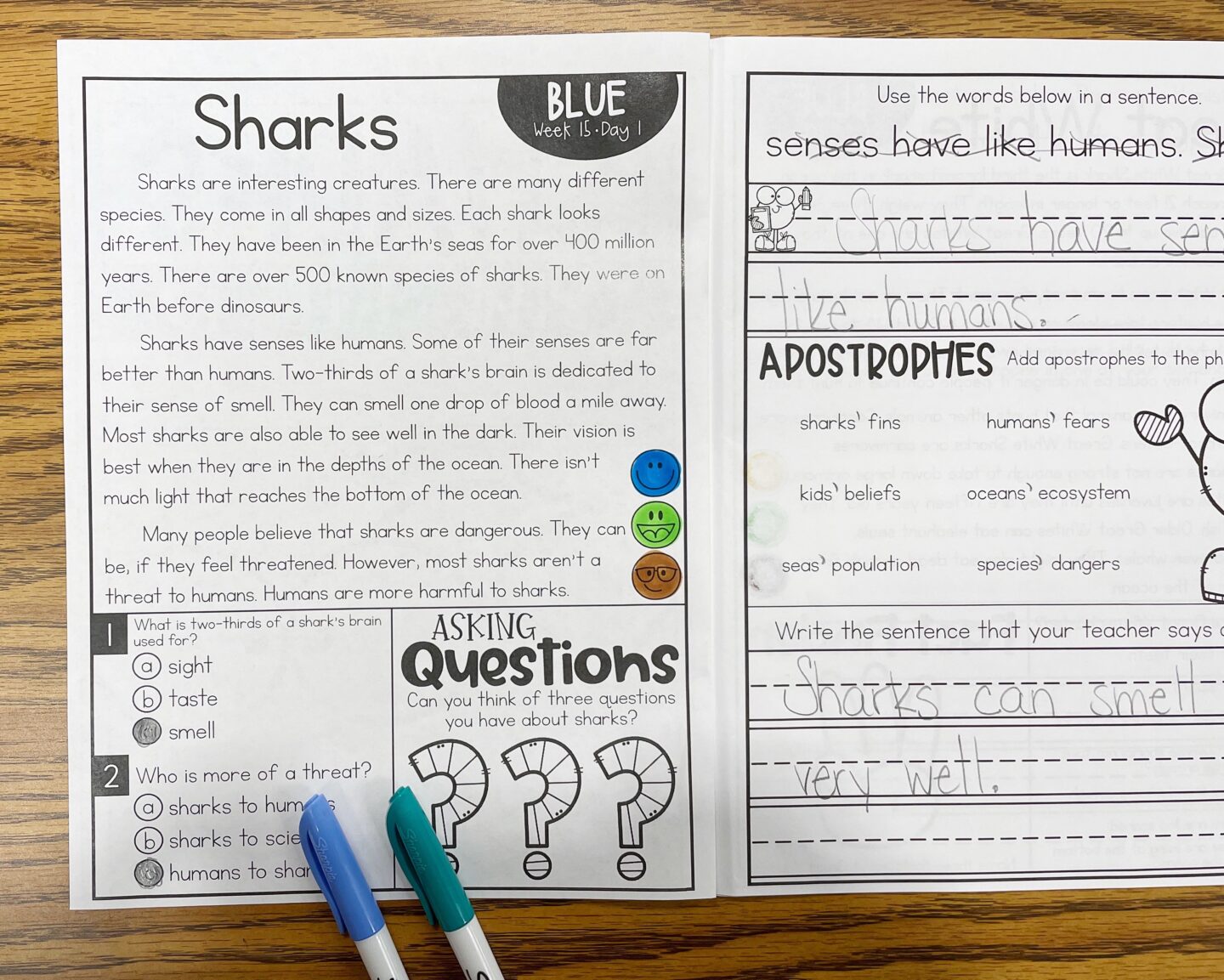
Read a Paragraph or Passage Together
I always begin by reading an introductory paragraph or passage, depending on the length of the text that we’ll be reading all together.
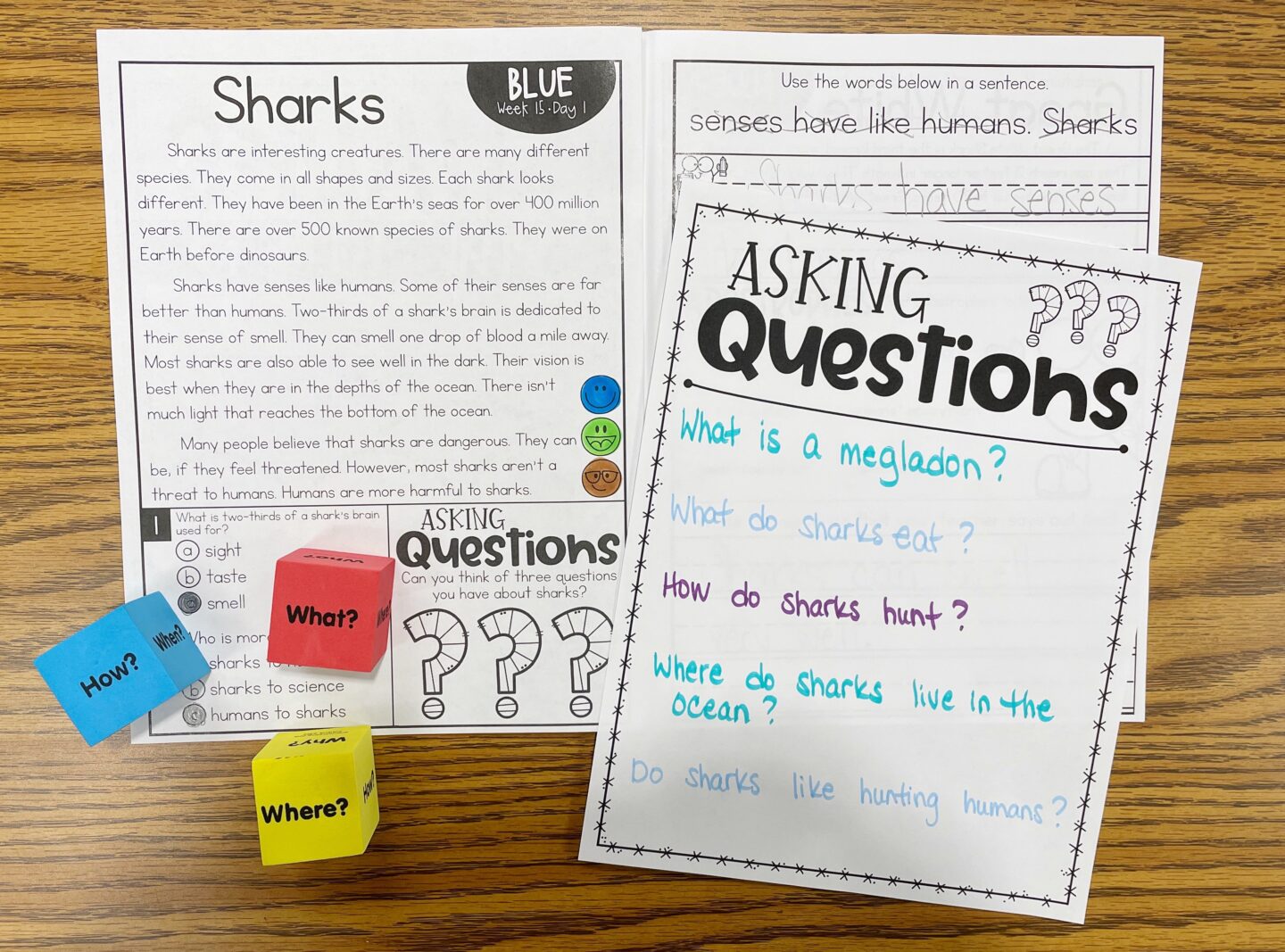
Create Anchor Chart with Questions
Once we are finished, we brainstorm a list of questions. As long as they are school appropriate, anything is fair game. Sometimes, the kids generate great questions that are only slightly related to the topic in our weekly reader. That’s ok! It gets their wheels turning.
Since asking questions can be so difficult, A SPED teacher friend of mine, Kristy English, recommended using these Asking Questions Dice to help students think of questions centered around various question words.
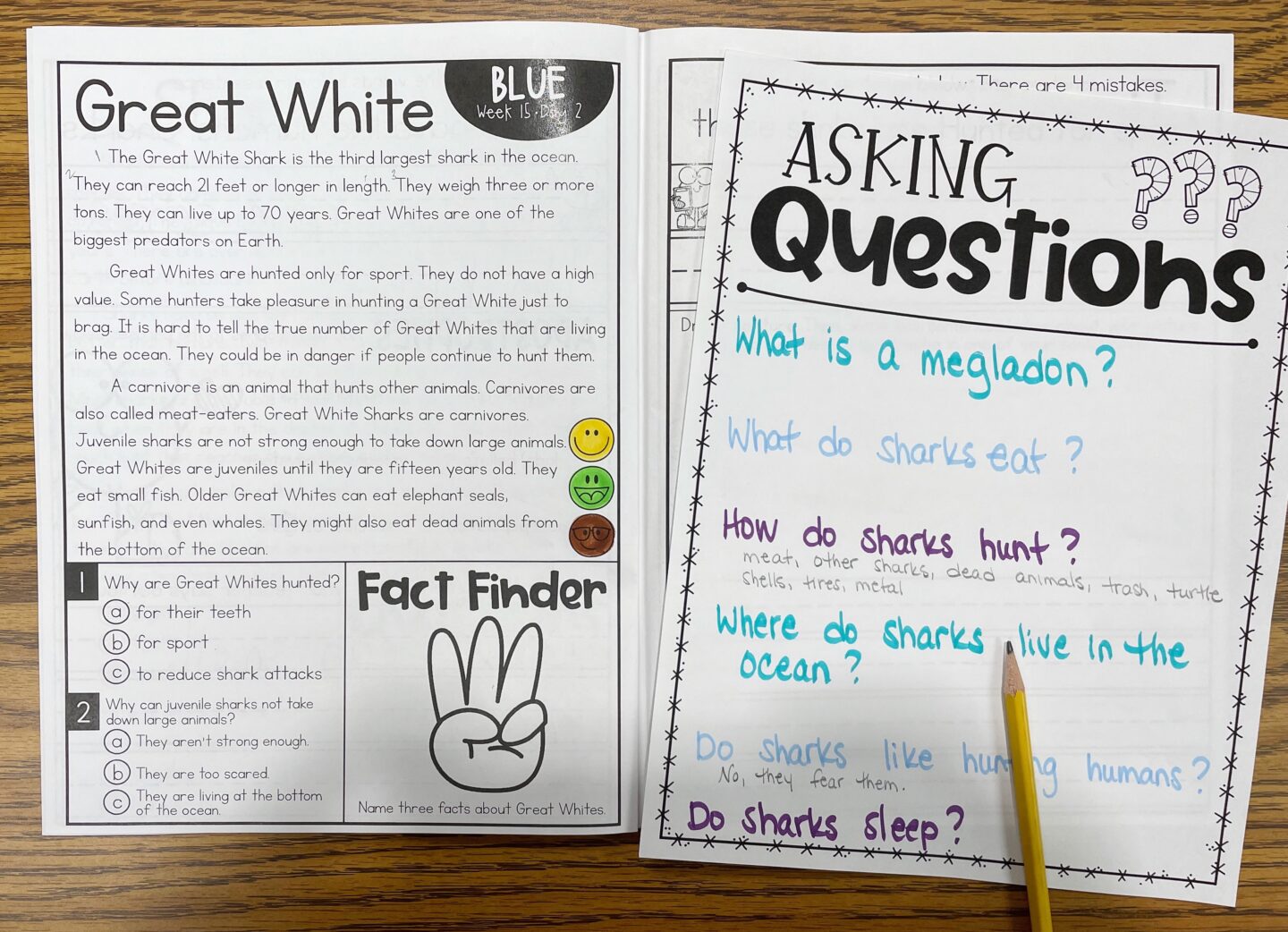
Answer Questions
Throughout the week, I remind the students in the group of the questions that are still left on our anchor chart. As we read, we answer questions on our anchor chart.
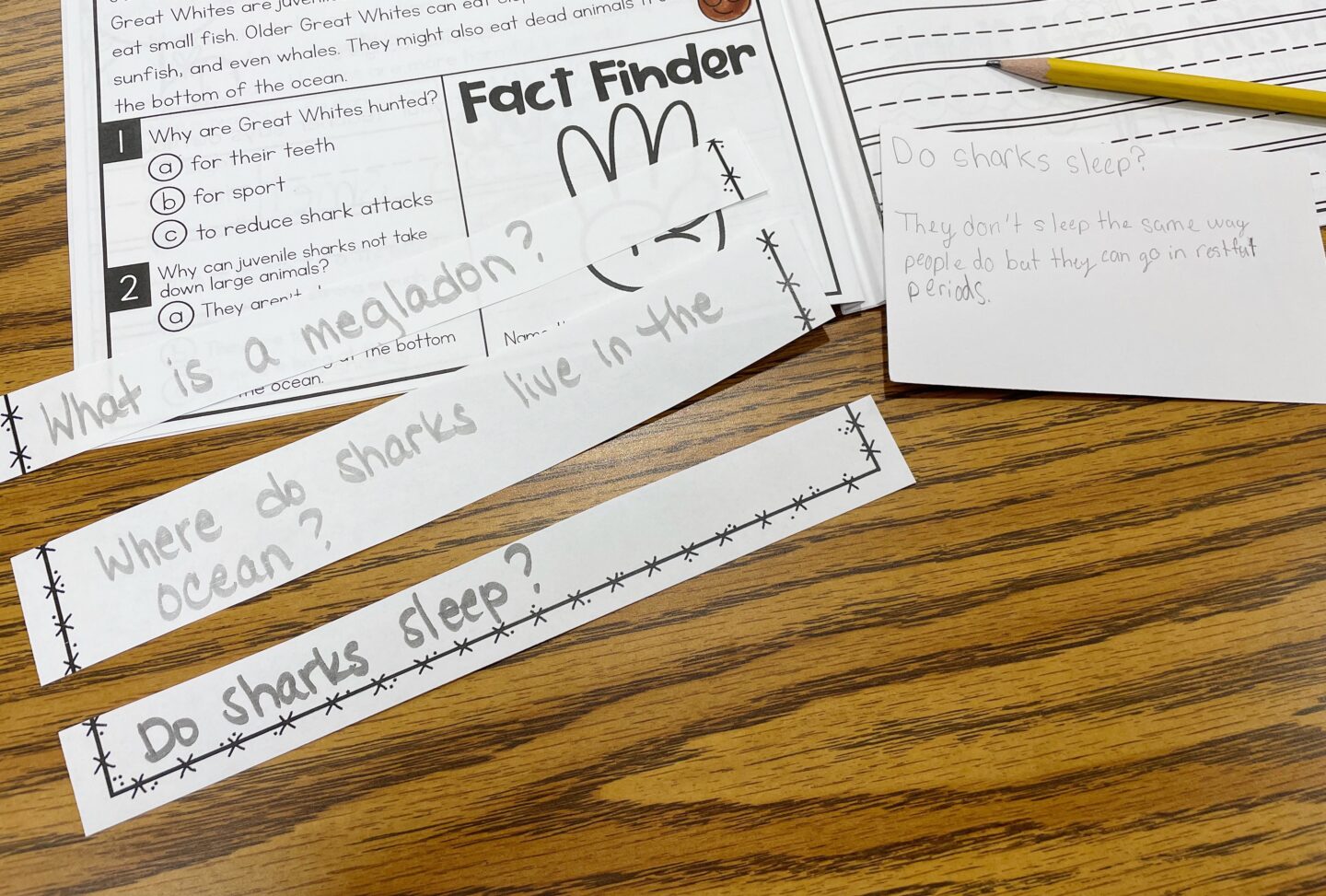
Unanswered Questions
Since every question that the students generate won’t be answered in the text, we usually spend a little time on Friday searching for the answers to their questions.
I make a copy of our anchor chart and cut strips with the questions for the students to answer.
It’s a fun way to practice a handful of skills. We restate the question, research an answer, practice comprehending BIG answers from the internet, and answer the question in our own words. They also like sharing the answer orally with the group.
